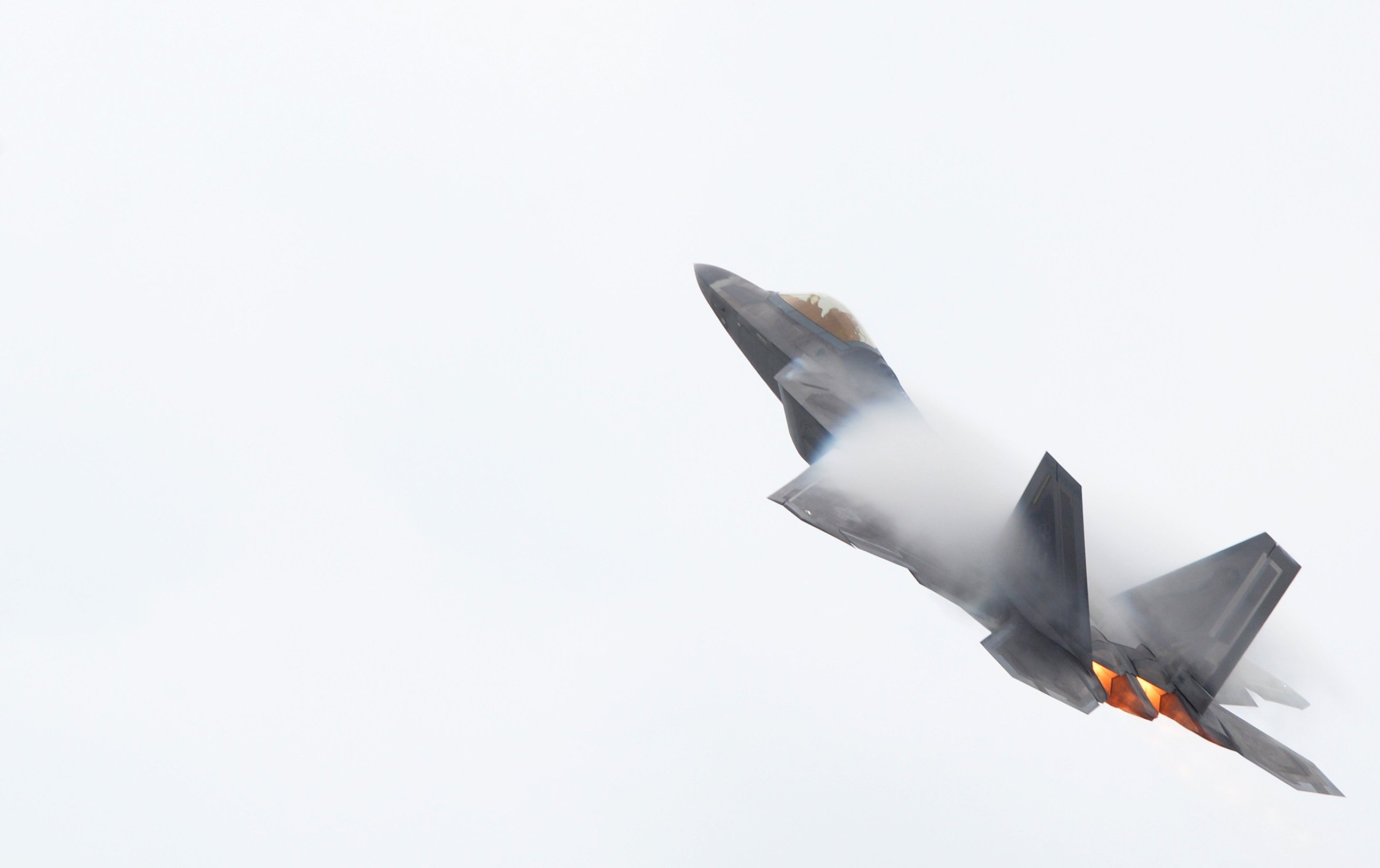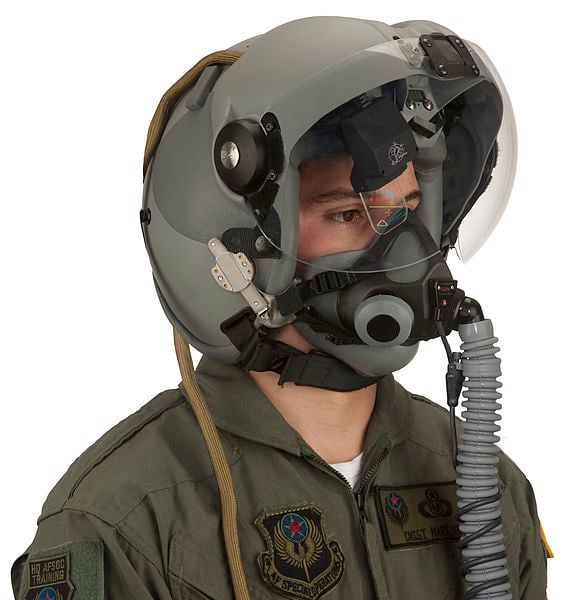
The U.S. Air Force’s elite 422nd Test and Evaluation Squadron recently evaluated the Thales Visionix Scorpion helmet-mounted cueing system on the Lockheed Martin F-22 Raptor at Nellis Air Force Base, Nev., according to a senior service official.
The service had hoped to test the full-color lightweight paddle-shaped monocle display onboard the Raptor in the summer of 2013, however the Congressionally-mandated sequestration automatic budget cuts put an abrupt halt on those activities.
But even though money is tight, the Air Force personnel with the Nellis-based operational test community worked closely with the F-22 System Program Office (SPO) in Dayton, Ohio, to put a new test series together for the Scorpion.
“There were some close calls but the folks at Nellis working with the SPO made it happen,” says one senior Air Force official familiar with the effort to integrate the Scorpion onto the Raptor.

Pilots from the elite 422nd TES, who performed the evaluation, are in the process of writing their report, but initial feedback suggests that the operational testers are thrilled with the new helmet-mounted sight.
The integration of the Scorpion is a major step for the Raptor community, which currently lacks a helmet-mounted cueing system such as the Vision Systems International (VSI) Joint Helmet-Mounted Cueing System (JHMCS) used on the F-15, F-16 and F/A-18 tactical fighters.
However, even though the Scorpion has been successfully tested on the Raptor, it is not certain the Air Force will be able to fund deploying the new helmet across the operational F-22 fleet even if there is a fielding recommendation.
Money is extremely tight, Air Force officials say, and there are mandatory upgrades for the Raptor that the service is struggling to fund. “The cuts are difficult. We have challenges trying to secure funding for all of our mandated items like Mode 5 [identification friend or foe],” the senior official says. Additionally, the Raptor must be brought up to compliance on the latest Federal Aviation Administration (FAA) and International Civil Aviation Organization (ICAO) air traffic management standards by around 2020.
The F-22 was originally intended to have a helmet-mounted cueing system, but the service ran into trouble integrating the JHMCS onto the jet because of problems with magnetically mapping the interior of the Raptor’s cockpit when the aircraft was still under development. Because of the added expense and technical complexity, the Air Force abandoned the JHMCS integration efforts and the F-22 was left without a helmet-mounted cueing system.
Further, at the present the Raptor is not able to carry the latest high off-boresight Raytheon AIM-9X Sidewinder air-to-air missile, and is instead limited to the older AIM-9M version. Many Raptor pilots have expressed serious misgiving about the situation. Even though the F-22 grossly outperforms other aircraft at the “merge”, the Raptor can be at a disadvantage once it transitions into the within-visual arena against a threat aircraft equipped with a helmet-mounted cueing system and a high off-boresight missile.
However, the Air Force is currently testing new software called Update 5, which will add a rudimentary AIM-9X capability starting on October 2015. While the new software upgrade will allow Raptor pilots to take advantage of the performance of the new missile, the jet will not display the correct symbology for the AIM-9X. Instead, the weapon will have the same displays as the current AIM-9M.
The situation will not be rectified until a new enhanced stores management system (ESMS) is added to the frontline Block 30 and 35 Raptors in 2018 with the Increment 3.2B hardware upgrade. With Inc. 3.2B, the F-22 will display the proper symbology for the AIM-9X.
Raptor pilots will be able take advantage of superior capabilities of the AIM-9X even without a helmet-mounted cueing system. But to fully exploit the outer edges of the new Sidewinder’s greatly expanded weapons employment zone, F-22 pilots will need a helmet-mounted cueing system.
The Air Force currently has 186 Raptors in its inventory, of those, 143 are frontline combat aircraft. The breakdown is 123 combat-coded and 20 back-up inventory jets according to the service’s Air Combat Command.
Air Combat Command public affairs could not immediately comment on the status of the Scorpion test efforts.





